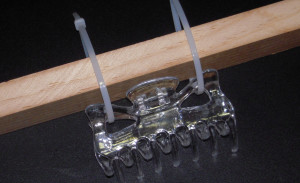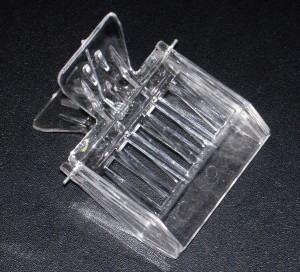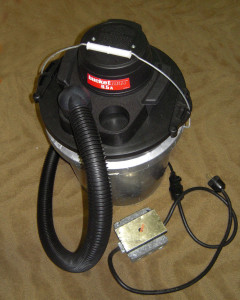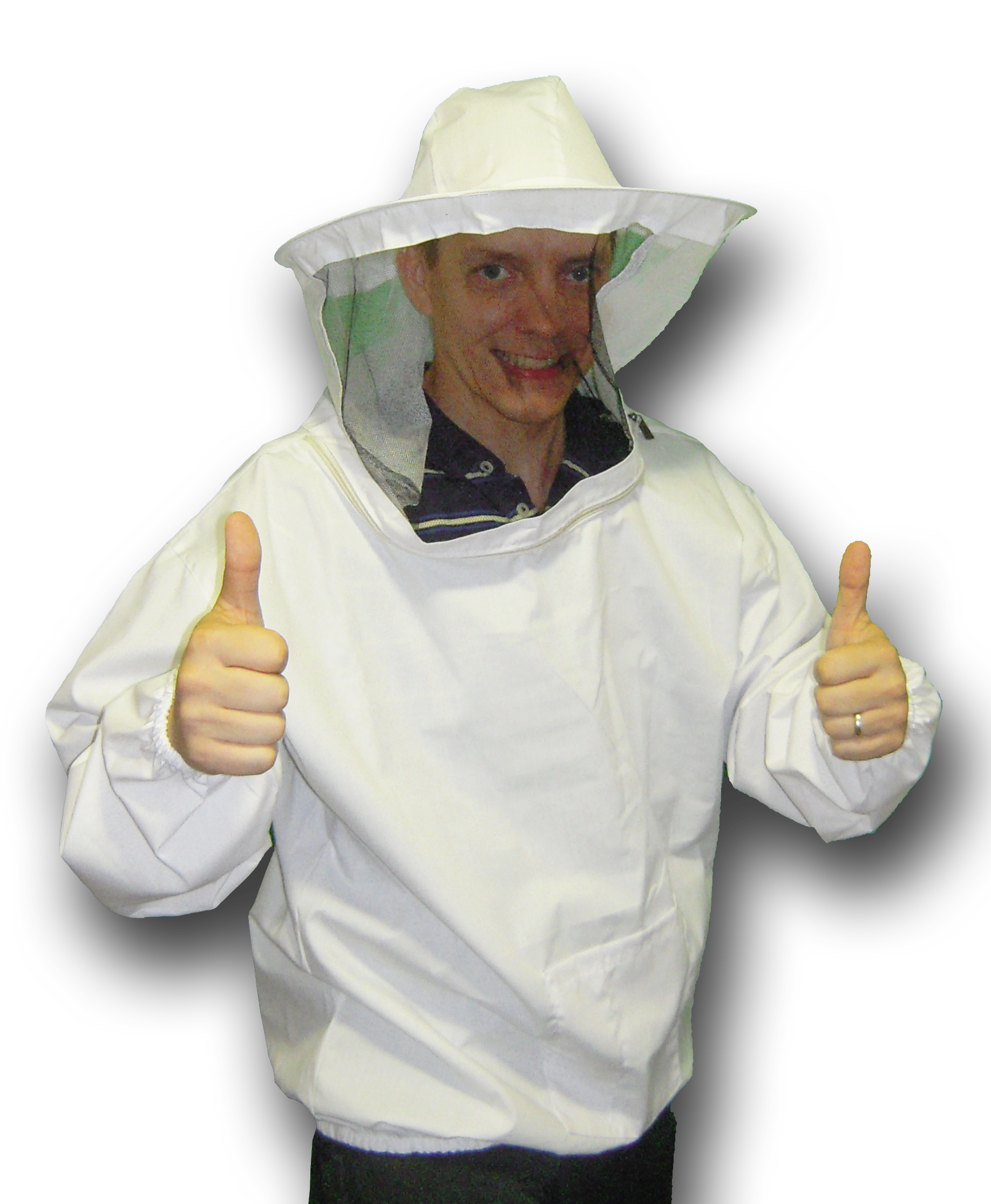Bee Colony Removal – Part 1
|
|
The small bee swarm I captured during the spring did not survive. I’m sure, at this point, that I did not get a queen. While sharing the sad news with my friend Butch, I learned that he has an established colony of bees living in the wall of his house – and he’s willing to let me come and attempt to remove them. The wall where the colony is located is about 18 feet off the ground, so this will be challenging.
My plan is to cut out the colony and move them into my newly completed top bar hive. Since this colony is well established (they’ve been there for 2 years), I expect them to have a good queen, plenty of brood, and a fair amount of stored honey. The honey will be harvested and the bees and brood comb will get transferred into the new hive.
 Step One: Research
Of all the ways to get bees for your hive, cutting a colony out of the wall of a residential home is probably the hardest. Reasonable people would not do this, but luckily I am not such a person. I have an optimistic can-do attitude, access to the Internet, and no known allergies to bee stings. So, game on!
Since I’ve never done this before, my first step was to do some research. I needed to learn the answers to the following questions:
- How do I capture the bees for relocation?
- How do I remove the comb from the walls?
- How do I attach the comb to my top bars?
- How do I keep from getting stung 10,000 times by pissed off bees???
 I came across 2 people on YouTube who provided extremely helpful information. The first is a beekeeper named McCartney Taylor who has a lot of fantastic information on his YouTube channel (Out of a Blue Sky)Â about keeping bees in top bar hives. In particular he has a video on advanced comb management that gave me a strategy for attaching the comb to my top bars.
I came across 2 people on YouTube who provided extremely helpful information. The first is a beekeeper named McCartney Taylor who has a lot of fantastic information on his YouTube channel (Out of a Blue Sky)Â about keeping bees in top bar hives. In particular he has a video on advanced comb management that gave me a strategy for attaching the comb to my top bars.
The second person I discovered is a man who goes by the handle JP the Bee Man. JP does a lot of colony removal work in a variety of locations and does a great job documenting the process. He has a number of videos showing how he removes bees from walls and he usually takes time in each video to explain the unique challenges of the location, layout his strategy for the removal job, and then roll camera while he works. One thing I like about his videos is that he speeds up the video of him working, but doesn’t cut out much of the process. He also stops and explains any unusual things he encounters.
The answers I arrived at for my critical questions are that I need to make a ‘bee vacuum’ to suck up as many bees as possible before I start cutting the comb loose. A flexible bread knife will be used to cut the comb away from the walls. I will use large hair clips secured with zip ties to attach the brood comb to the top bars (honey will get harvested and drone comb will get tossed.) And finally, even though JP usually works without protective gear, I will have a bee jacket with a veil and rubber gloves on while I work (even JP keeps protective gear on the truck for those times when he runs across an aggressive colony.)
Step Two: Map Out a Bee Removal Strategy
 After all of my research, here is my basic plan for the removal process. I will smoke the entrance and then use my saw to slowly cut open the wall and expose the hive. Once the hive is open, I will use a bee vacuum to gently capture as many workers as I can to give me some room to work on the comb. Next, I’ll start cutting away the comb. Capped honey will go into food-grade plastic buckets, brood comb will get secured into a small top bar bait hive, and drone comb will get tossed in the trash. After the majority of the comb is removed, I will try to locate and capture the queen. If I locate the queen, then I will vacuum up as many remaining bees as possible and remove the rest of the comb. If I don’t find her, I’ll just pray that I somehow got her earlier with the vacuum.
After all of my research, here is my basic plan for the removal process. I will smoke the entrance and then use my saw to slowly cut open the wall and expose the hive. Once the hive is open, I will use a bee vacuum to gently capture as many workers as I can to give me some room to work on the comb. Next, I’ll start cutting away the comb. Capped honey will go into food-grade plastic buckets, brood comb will get secured into a small top bar bait hive, and drone comb will get tossed in the trash. After the majority of the comb is removed, I will try to locate and capture the queen. If I locate the queen, then I will vacuum up as many remaining bees as possible and remove the rest of the comb. If I don’t find her, I’ll just pray that I somehow got her earlier with the vacuum.
Once all the comb is removed from the wall, I will scrape out as much wax as possible, wipe down the wall to remove honey and nectar that drips out during the process, and mist down the wall with a strong mint tea mixture (I’m told that bees don’t like it, so it should deter them from returning.) Then, I’ll let Butch cover the wall while I secure and cover the bait hive and load up my gear to head home. If I get home early enough, I will transfer the bees to the main hive the same day. Otherwise, I’ll make the transfer the following day.
Of course, no plan survives first contact with the bees. Maybe I’ll get stung 1,000 times, fall off the scaffold, and end up in the ER. Stay tuned to find out what actually happens when I try to pull this off.
Step Three: Assembling My Gear
After countless hours of research, I put together a list of all the things I think I will need to get this removal job done successfully. My friend Butch is going to rent a lift or scaffold (the bees are 2 stories up) and take care of repairing the wall after we are done. So my gear will be focused on opening the walls, capturing the bees, and getting them into the hive. Here is my list:
- Oscillating Saw
- Scraper
- Bee Vacuum w/2 5 Gallon Plastic Buckets and Lids
- Bread Knife
- Bee Brush
- Smoker and Fuel
- Hair Clips
- Zip Ties
- 2 – 5 Gallon Food Grade Buckets for Harvested Honey Comb
- Queen Clips
- Small Bait Hive
- Trash Bags
- Bee Jacket with Veil
- Rubber Gloves
- Duct Tape
 Most items on the list are pretty self explanatory. A bee brush is just a long thin horse hair brush that is gentle on the bees. The queen clip looks like a plastic hair clip with no teeth. If I can successfully locate the queen, this will help me ensure that she doesn’t get away before I move her into the new hive. The bee vacuum is a home made deal consisting of a BucketMax shop vac unit that sits on top of a 5 gallon bucket. I’ve plugged it into a dimmer box to let me dial down the motor to reduce the suction and keep the bees from getting squashed when I suck them up. When the bucket fills up with bees, I’ll give it a couple bumps on the ground to move the bees to the bottom, slip of the vacuum head, and slip on a cover with a screened vent. The bees will ride in the bucket until I get them home.
Most items on the list are pretty self explanatory. A bee brush is just a long thin horse hair brush that is gentle on the bees. The queen clip looks like a plastic hair clip with no teeth. If I can successfully locate the queen, this will help me ensure that she doesn’t get away before I move her into the new hive. The bee vacuum is a home made deal consisting of a BucketMax shop vac unit that sits on top of a 5 gallon bucket. I’ve plugged it into a dimmer box to let me dial down the motor to reduce the suction and keep the bees from getting squashed when I suck them up. When the bucket fills up with bees, I’ll give it a couple bumps on the ground to move the bees to the bottom, slip of the vacuum head, and slip on a cover with a screened vent. The bees will ride in the bucket until I get them home.
After the work is done, I may think of a few extras I wish I had packed for the job. If so, I’ll post a followup with a revised list of tools.
